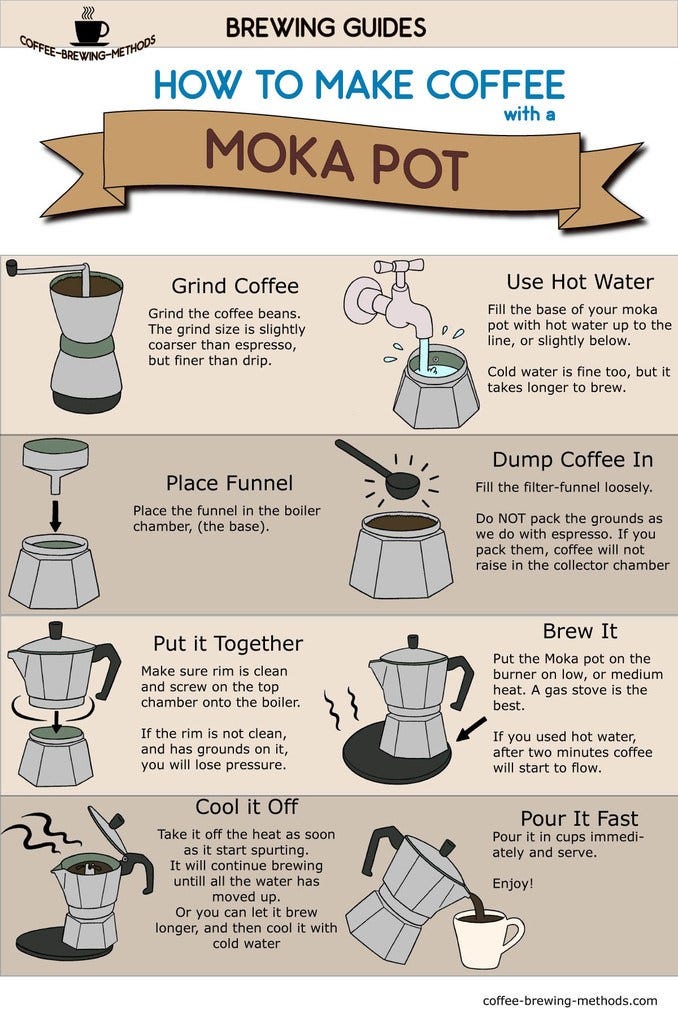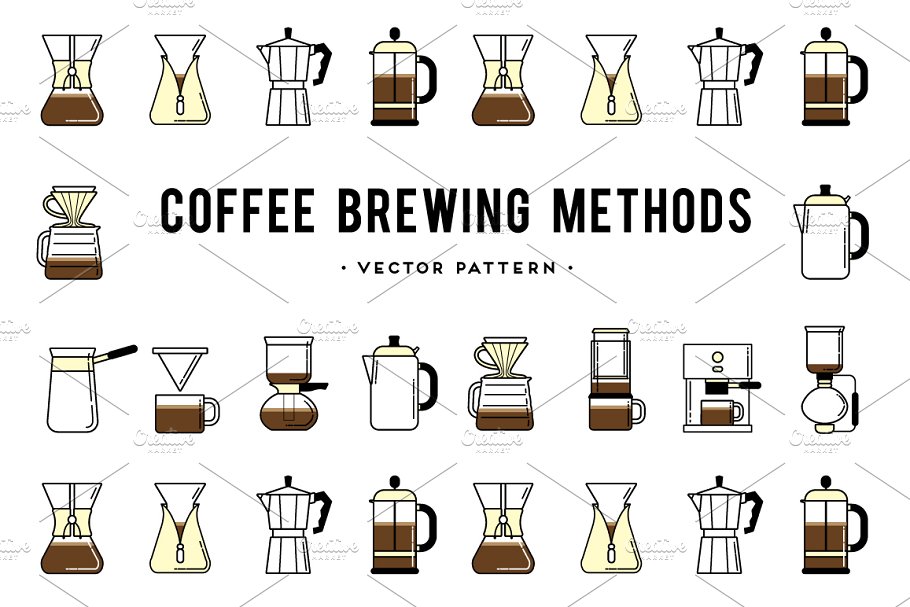Finding the Art of Coffee Brewing Methods: Tips for every single Enthusiast
Finding the Art of Coffee Brewing Methods: Tips for every single Enthusiast
Blog Article
The Scientific Research Behind Coffee Developing: Exactly How Temperature Level and Time Affect Your Beverage
Recognizing the science behind coffee developing discloses that temperature level and time are not simple variables but critical aspects that dictate the beverage's flavor profile and general top quality. As we discover the subtleties of these aspects, the question emerges: just how can one efficiently equilibrium temperature level and time to accomplish that best brew?
The Chemistry of Coffee Extraction
The chemistry of coffee removal looks into the intricate processes that change raw coffee beans into the fragrant beverage appreciated worldwide. This change primarily includes the solubility of numerous compounds existing in the beans, which are affected by variables such as work size, water top quality, and the developing approach employed.
During the developing procedure, warm water acts as a solvent, drawing out soluble compounds, including high levels of caffeine, acids, sugars, and lipids, from the coffee grounds. Each substance adds to the taste account, fragrance, and body of the last beverage. As an example, acids are in charge of tangy and brilliant notes, while oils add to an abundant mouthfeel.
The removal procedure is not uniform; different compounds liquify at various rates. The preliminary phases of brewing remove acids and sugars, resulting in a pleasant level of acidity, while prolonged extraction can bring about bitterness as a result of over-extraction of unwanted substances. Recognizing these chemical communications is critical for optimizing brewing methods, as the equilibrium in between removal time and water temperature level can substantially affect the general high quality of the coffee. Ultimately, grasping the chemistry of coffee extraction is crucial to attaining a all-round and tasty mug.
Perfect Brewing Temperatures
Discovering the right developing temperature is vital for opening the full possibility of coffee tastes and fragrances - coffee brewing methods. Study shows that the optimal array for brewing coffee exists in between 195 ° F to 205 ° F(90 ° C to 96 ° C) Within this variety, the extraction procedure successfully liquifies the preferable soluble compounds in coffee beans, bring about a well balanced and tasty mug
Brewing at lower temperatures, such as listed below 195 ° F(90 ° C ), might lead to under-extraction, producing a weak and acidic brew with soft tastes. Conversely, brewing at temperature levels surpassing 205 ° F(96 ° C) can cause over-extraction, generating a extreme and bitter preference due to the extreme dissolution of unwanted substances, such as tannins.
Moreover, the suitable brewing temperature can differ depending on the coffee bean type and roast level. Lighter roasts frequently benefit from somewhat greater temperature levels to boost their intricate taste profiles, while darker roasts might be better fit to lower temperatures to alleviate anger.
Eventually, preserving accuracy in brewing temperatures is vital for attaining an unified balance of tastes, ensuring that every mug of coffee delivers an enjoyable sensory experience.
Influence of Brewing Time
Brewing time plays a pivotal function in determining the taste account and general top quality of coffee. The extraction procedure, which affects the preference, scent, and body of the drink, is largely based on for how long the coffee premises touch with water. Much shorter brewing times can result in under-extraction, causing a sour or weak flavor, as not nearly enough soluble substances are dissolved. Alternatively, long term brewing can lead to over-extraction, where unwanted substances are released, resulting in Your Domain Name an astringent or bitter preference.
Optimal brewing time differs relying on the technique made use of and the grind size of the coffee. For example, a French press commonly calls for regarding 4 minutes, while coffee extraction is generally finished within 25 to 30 secs. It is vital to calibrate brewing time in conjunction with other variables, such as water temperature and coffee-to-water proportion, to achieve the wanted taste profile.
Comprehending the effect of brewing time enables coffee lovers to improve their developing strategies, ultimately boosting the sensory experience of their mug (coffee brewing methods). With cautious attention to this variable, one can open the complete capacity of the coffee, disclosing its one-of-a-kind features and subtleties
Brewing Techniques and Their Effects

For instance, methods like French press and cool brew enable for a longer steeping time, resulting in a fuller body and durable taste because of increased extraction of oils and soluble solids. Alternatively, coffee brewing uses high stress and a shorter extraction time, generating a concentrated shot that emphasizes intense tastes and an abundant crema.
Pour-over methods, such as Chemex or V60, use an even more regulated extraction procedure, allowing the brewer to adjust flow price and water circulation, which can boost illumination and quality. Percolation approaches cycle water through the coffee premises numerous times, leading to a stronger, often bitter taste.
Last but not least, making use of paper filters versus steel filters can likewise impact the final preference; paper filters typically yield a cleaner mug by capturing oils and fine particles, while steel filters allow more oils to pass through, adding to a fuller mouthfeel - coffee brewing methods. Comprehending these subtleties can boost the coffee experience dramatically
Tips for Improving Your Brew
A well-executed brew can transform even the most basic coffee right into an exceptional experience. Grind the beans simply prior to brewing to make best use of freshness, making certain the grind size matches your developing Click This Link method-- coarser for French press and finer for espresso.
Water high quality plays an essential role; use filteringed system water devoid of contaminations. The ideal developing temperature ranges between 195 ° F and 205 ° F(90 ° C to 96 ° C ) Too warm can blister the coffee, while as well trendy may under-extract tastes.
Timing is just as vital. For immersion methods, steeping for 3 to five mins is ideal, whereas drip approaches normally take around five minutes. Explore mixture times to locate your favored strength.

Final Thought
In recap, the intricate relationship between temperature and time is extremely important in the coffee developing procedure. Following optimal developing temperatures in between 195 ° F and 205 ° F, together with exact timing tailored to each approach, makes certain the desired taste account is accomplished. Understanding these clinical principles encourages individuals to fine-tune their brewing strategies, inevitably causing a more balanced and delightful coffee experience. Proficiency of these elements is necessary for any type of coffee fanatic looking for excellence in their drink.
Comprehending the science behind coffee brewing discloses that temperature level and time are not simple variables however crucial elements that determine the beverage's taste profile and general top quality. Understanding these chemical communications is crucial for maximizing brewing strategies, as the balance between extraction time and water temperature level can substantially affect the total high quality of the coffee.Brewing time plays a critical role in identifying the flavor profile and overall high quality of coffee. By concentrating on these elements-- bean quality, grind dimension, water temperature, soaking time, and ratio-- you can boost your coffee developing procedure, resulting in a constantly superior mug.
In summary, the intricate relationship in between temperature and time is paramount in the coffee published here brewing procedure.
Report this page